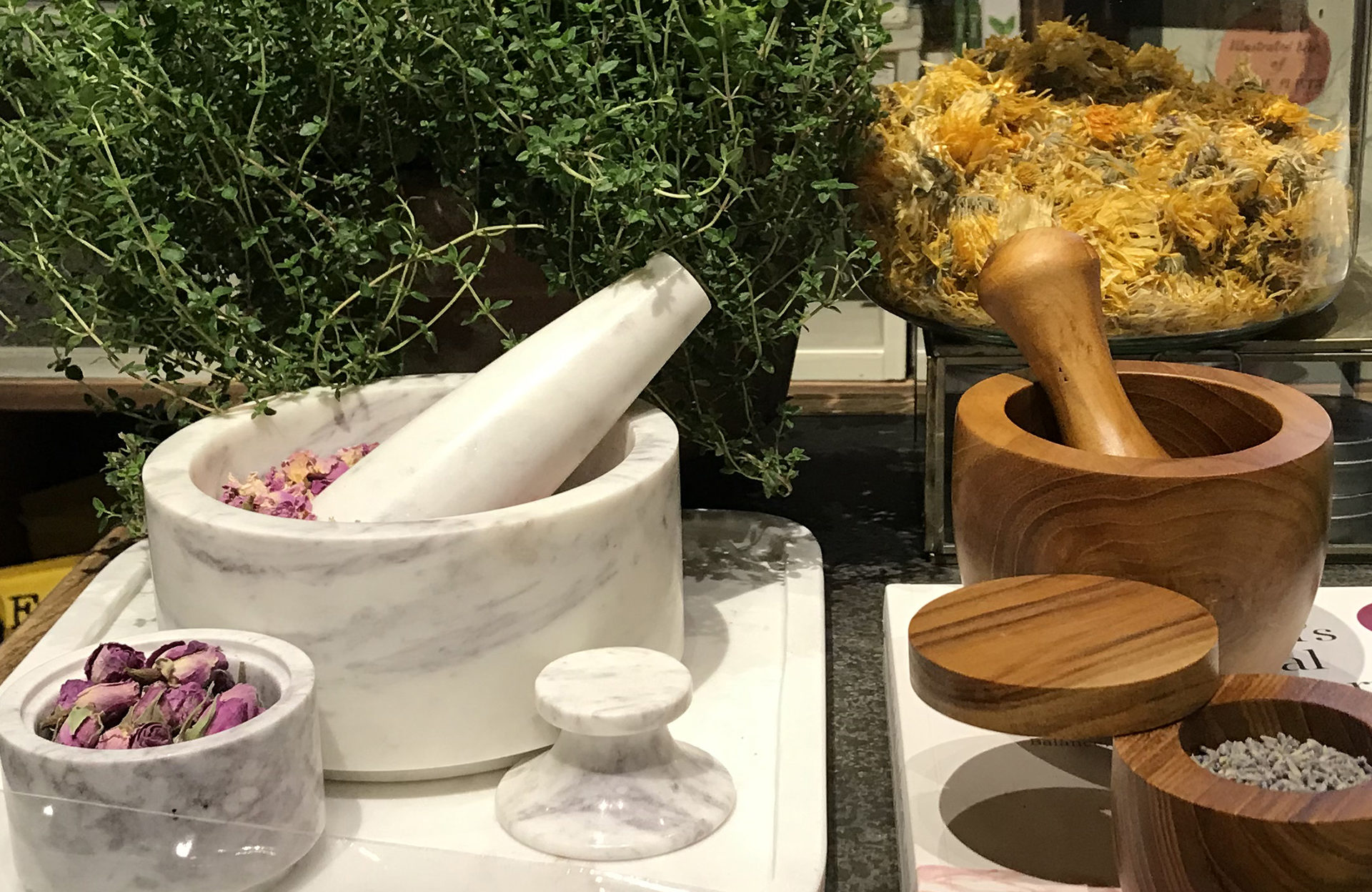Essential Oil Basics

A few months ago someone gave me lavender essential oil, which has been proven to reduce stress. Each morning I open the top of this small bottle, inhale, exhale, and go about my day. When I additionally received an at-home mud mask, I instinctively poured a few drops of the oil into the mix and have been applying it to my face, on average, two times a week. I just figured the calming feeling would transfer to my face, I had no idea that doing so could benefit my skin — a fact I only recently became aware of.
I was like so many novices in that lavender was the only essential oil I knew. Apparently there are over 90, which means I barely inhaled the surface. When I discovered Shelter Island resident Sarah Shepherd was doing an herbal workshop at Marders in Bridgehampton on how to make essential oil perfumes, my interest was piqued.
Shepherd’s magical energy guided me through an informative and interactive class in Marders’ fairly new greenhouse. The sun warmed the room as aromatic oils filled my olfactory senses. By the end of the class, I had created my own, unique compound of an essential oil from a brand called Serene Living. I created it for my mother; eucalyptus, tea tree, Stress Gone, grapefruit, and Tension Release. Additionally, I mixed roughly 15 drops of this oil compound into a perfume mixed with a sunflower seed carrier oil, and a body spray mixed with rose water. I cannot say enough good things about this workshop. As a woman with an inherently chaotic, New York energy, I can tell you Shepherd created a peaceful, inviting space.
So what is an essential oil, essentially? It is a highly concentrated plant oil, extracted through distillation; capturing the scent, or essence, of the plant along with the unique chemical composition. It can be from leaves to roots. To give you an idea of what it takes to make this, the National Institute of Environmental Health Sciences notes that it takes 220 pounds of lavender flowers to produce nearly one pound of oil.
How do you apply them? These extracts can be inhaled directly (best, if used with a diffuser) or mixed with a carrier oil, diluting the concentrated essential oil, to be applied to the skin. Carrier oils in your own kitchen can include extra-virgin olive oil, almond oil, and coconut oil.
Place them on pulse points. It’s best to do intricate research on what your goal is to pick the oil and location on the body best for you. Take it one step further and apply a few drops of essential oil to a bath, your face mask (like I did), shampoo, and beyond. To give an idea of ratio, I added roughly 11 drops of my essential oil blend into a two-ounce bottle of rose water.
Skip the hazardous chemicals added to so many household products typically used on a daily basis. Rather than buying into synthetic fragrances, create your own from one of the many essential oils. It does more than heal, it also smells really good.
Upcoming classes include “Full moon flower essences” on May 18 and “Creating your own herbal apothecary” on May 26. Sign up for one of Shepherd’s other classes at Marders by visiting http://www.marders.com.
@nikkionthedaily
nicole@indyeastend.com



